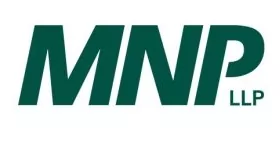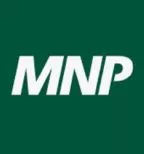Cross-examination is such a critical part in the trial process that entire books have been devoted to the subject, providing important advice and guidance.
In preparing this article, I have culled material from selected writings of two prominent Canadian trial lawyers and two American litigators, particularly that with respect to expert witnesses.
The Canadian authors are former Supreme Court Justice John Sopinka, in The Trial of An Action (1981), written when he was a practising litigator, and Ontario District Court Judge Roger Salhany, in Cross-Examination: The Art of the Advocate (1991).
The American authors are Francis Wellman, a 19th century trial lawyer whose celebrated 475-page classic is The Art of Cross-Examination (1903), and Peter Brown, who wrote The Art of Questioning: Thirty Maxims of Cross-Examination (1988).
The books provide informative and colourful insight into these cross-examiners' strategies and thought processes.
Sopinka states that a witness' evidence can be contradicted or impeached by (a) previous inconsistent statements, (b) other evidence, (c) contradiction in the witness' own evidence or inherent improbabilities therein, or (d) attacking his or her memory, power of observation and credibility. However, in cross-examining an expert witness (as opposed to a fact witness), Sopinka suggests the following:
- Be schooled by an equally competent expert.
- Flaw the opposing expert so that your expert is preferred.
- Discredit the expert's opinion by refuting a basic assumed or found fact.
- If a basic assumption or fact cannot be refuted, attack the expert's theory [relying upon your own expert].
Salhany emphasizes that the cross-examiner must fully understand the nature and effect of the expert testimony so that it can effectively be attacked. "Some cross-examiners will plunge into a cross-examination of the expert, without assessing whether the witness has hurt his case or not." He quotes John Henry Wigmore, author of the leading American text, Wigmore on Evidence (1904): "Crossexamination is the greatest legal engine ever invented for the discovery of truth". However, Wigmore qualifies this by saying: "You can do anything with a bayonet except sit on it. A lawyer can do anything with cross-examination if he is skilful enough not to impale his own cause upon it." Salhany continues, "If [the expert's] evidence has hurt you then zero in on the specific issue that you wish to challenge. Don't start off by attacking his credentials and expertise unless it is necessary".
Sopinka states that while there are many styles and techniques of cross-examination, it must serve at least to:
- obtain helpful admissions or evidence.
- contradict or impeach the witness.
- create an impression or atmosphere for the judge or jury.
However, counsel must first decide whether to even cross-examine, and, if so, what it would accomplish ... and whether, by not cross-examining, it will imply to the court that the expert's evidence is accepted.
Wellman suggests that nothing could be more absurd or a greater waste of time than cross-examining a witness who has testified to no material fact against the lawyer's case. He observes that many trial lawyers seem to feel it is their duty to cross-examine every witness who is sworn; they appear to be afraid that if they do not cross-examine, their client will suspect them of ignorance or inability to conduct a trial.
Brown gives the following advice:
"... the early masters understood better than today's professors the importance of foregoing cross-examination and the stupidity of having an adverse witness repeat and thus reinforce all that was said so damagingly on direct ... .
"More cross-examinations are suicidal than homicidal. When in doubt don't ask a question. When in doubt don't cross-examine. Do only what's necessary, and then get the hell out".
He refers to the comments of another celebrated early 20th century American trial lawyer, Max Steuer, who had 40 years of experience as a cross-examiner:
"... cross-examination should be pointed to two objectives: either to destroy the story told by the witness or to destroy the witness himself. If neither of these objectives is attainable (and if you have properly prepared your case, you should know the prospect) a pointless and scoreless cross-examination does your case more harm than good. And when you have scored your point on cross-examination, for heaven's sake, quit."
Salhany says:
"... Properly conducted, cross examination is the best method for testing the value of human statements. Badly conducted, it can destroy one's own cause.
"Cross-examination should strive to achieve two goals. The first is to weaken the case for the other side by discrediting the testimony of the witness in chief. The second is to elicit evidence from the witness which will establish facts favourable to the cross-examiner's side. Those goals are not necessarily mutually exclusive. Often in seeking to achieve one, the cross-examiner may be successful in achieving the other."
Rules for The Cross-Examiner
The principal "rules" that the cross-examiner should follow are summarized in the remainder of this article.
1. Size-up your witness.
Salhany categorizes witnesses under various headings, including:
- The brilliant witness, and
- The garrulous witness.
Each of his witness categories requires a special approach by the cross-examiner in attempting to attack the testimony.
2. Begin the cross-examination dramatically.
Sopinka believes that the best technique is a dramatic beginning: This is when counsel has the attention of the judge and when the witness is most vulnerable. Counsel should not permit the witness to become acclimatized and gain confidence; rather, put to the witness an early series of questions that go to the heart of the matter.
3. Don't ask a question in a courtroom context without knowing the answer first.
Sopinka notes that while this is a general rule, there can be exceptions:
"The truth lies in between. In a strong case, not dependent on cross-examination, the crossexaminer should take no chances. He should restrict his questions to matters that are either not capable of doing damage or in respect of which the witness is constrained by previous statements. But in a case that depends on cross-examination this approach is too stultifying. The cross-examination must be built up on probabilities. The cross-examiner tries to foresee the different answers that may be given and formulates questions to meet them. ... ."
4. Don't ask why.
Brown believes that the only times when you can ask "why" in cross-examination is when the adverse witness is inextricably "impaled" or if counsel's pre-trial examination-for-discovery and other testimony has made him/her aware of facts that the opposing party simply cannot explain away. In this latter context the question "why" is rhetorical and the witness' silence tells the tale.
Once the witness/evidence has been discredited, don't ask more questions. If cross-examining counsel continues to ask more questions, the witness may be afforded an opportunity of explaining away prior admissions. Similarly, counsel should not over-stress, as this may provide the witness an opportunity of qualifying his or her answer or shrewdly placing the matter in another context. As Brown notes, "you will have plenty of opportunities to emphasize the damaging admission or testimony in summation to the ... ."
5. Don't ask open-ended questions.
Brown suggests that counsel's questions should be short, definite, clear, pithy, without characterization and close-ended. Counsel should not ask general questions that the witness can answer with a speech. This would give the hostile witness a chance to bring in testimony otherwise inadmissible and self-serving. Counsel must control the opposing witness on crossexamination or the witness will destroy the questioner and, in turn, the client's cause. For the hostile witness, leading questions (permitted in cross-examination but not in direct) or close-ended questions are those that call for a "yes" or "no" response such as "Isn't it correct ... ?". In fact, all questions in critical areas should be close-ended. By carefully limiting the answers, counsel can successfully preclude the expert from expounding on his/her theories and reasserting his/her opinions and explanations. Counsel may even succeed in planting seeds of doubt in the court's mind about the expertise of the witness.
6. Don't put the evidence of your own expert to the expert you are cross-examining.
Sopinka says any direct reference to counsel's own expert should be limited to only an admission (which will normally be forthcoming) by the opposing expert on the witness stand that counsel's own expert is well-qualified and highly regarded: "While much of the substance of your expert's theory will be put to the witness, a specific identification of your expert's evidence in the question may result in getting a rebuttal in advance".
In Part II, I summarize the authors' additional rules for cross-examining an expert.
Originally published by The Montreal Lawyer.
The content of this article is intended to provide a general guide to the subject matter. Specialist advice should be sought about your specific circumstances.

